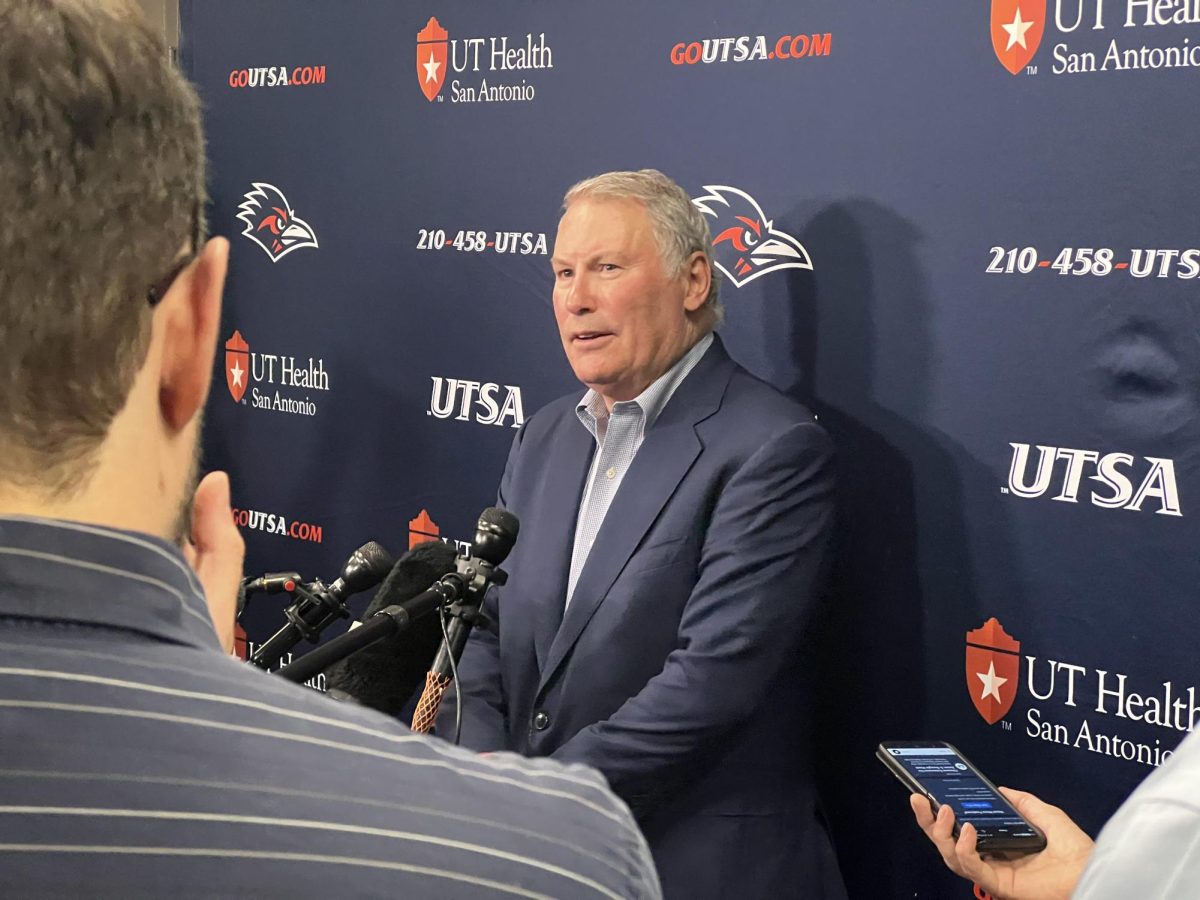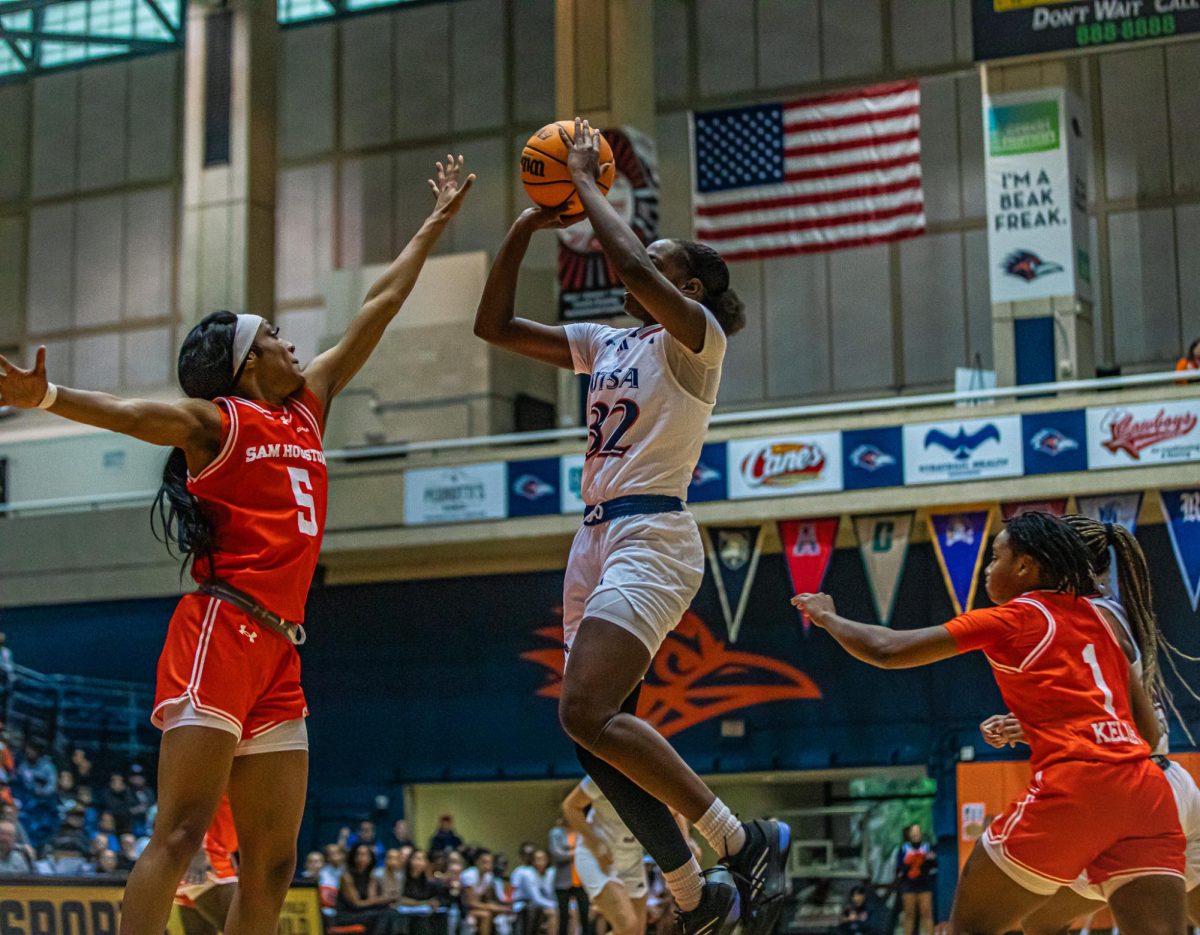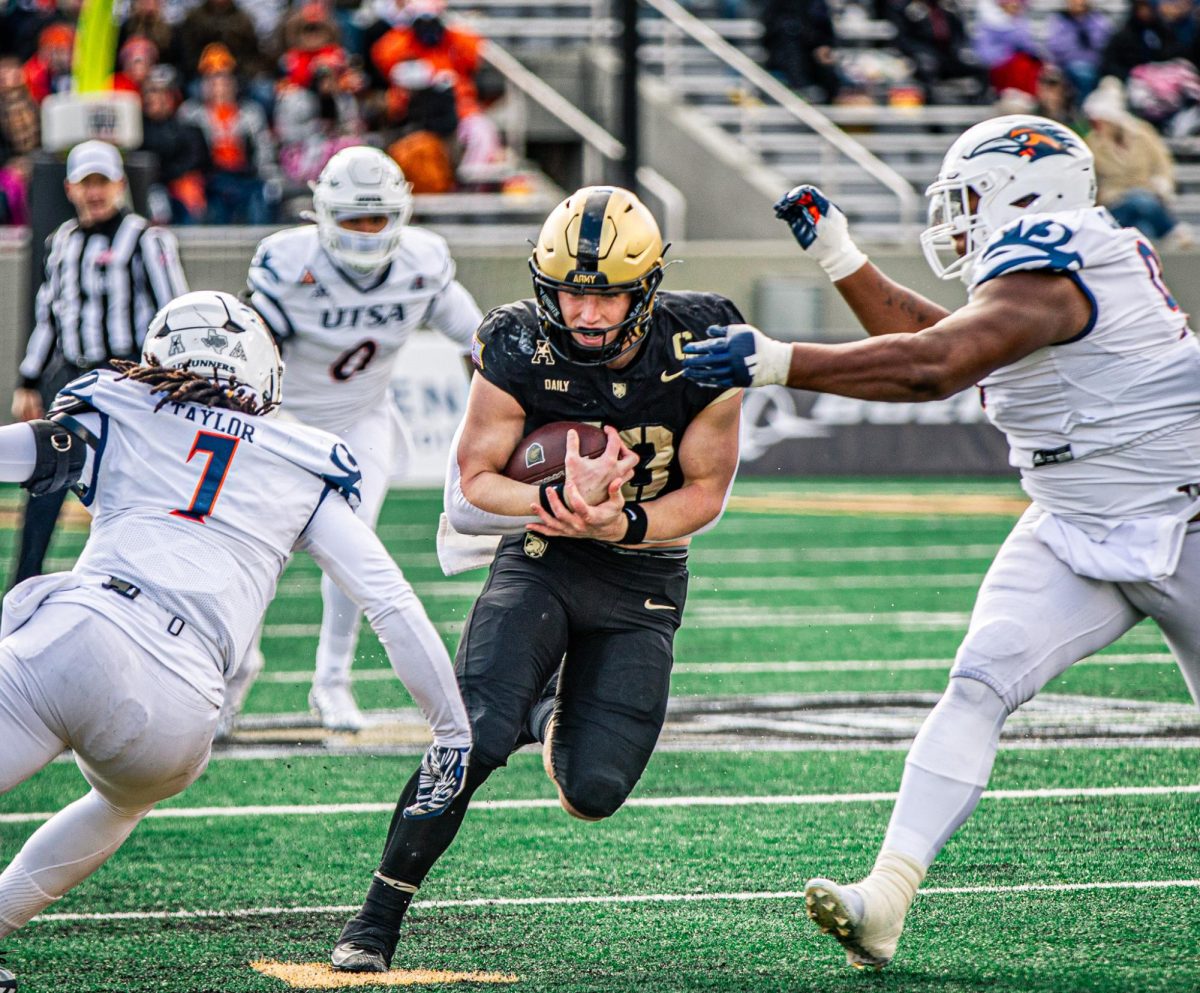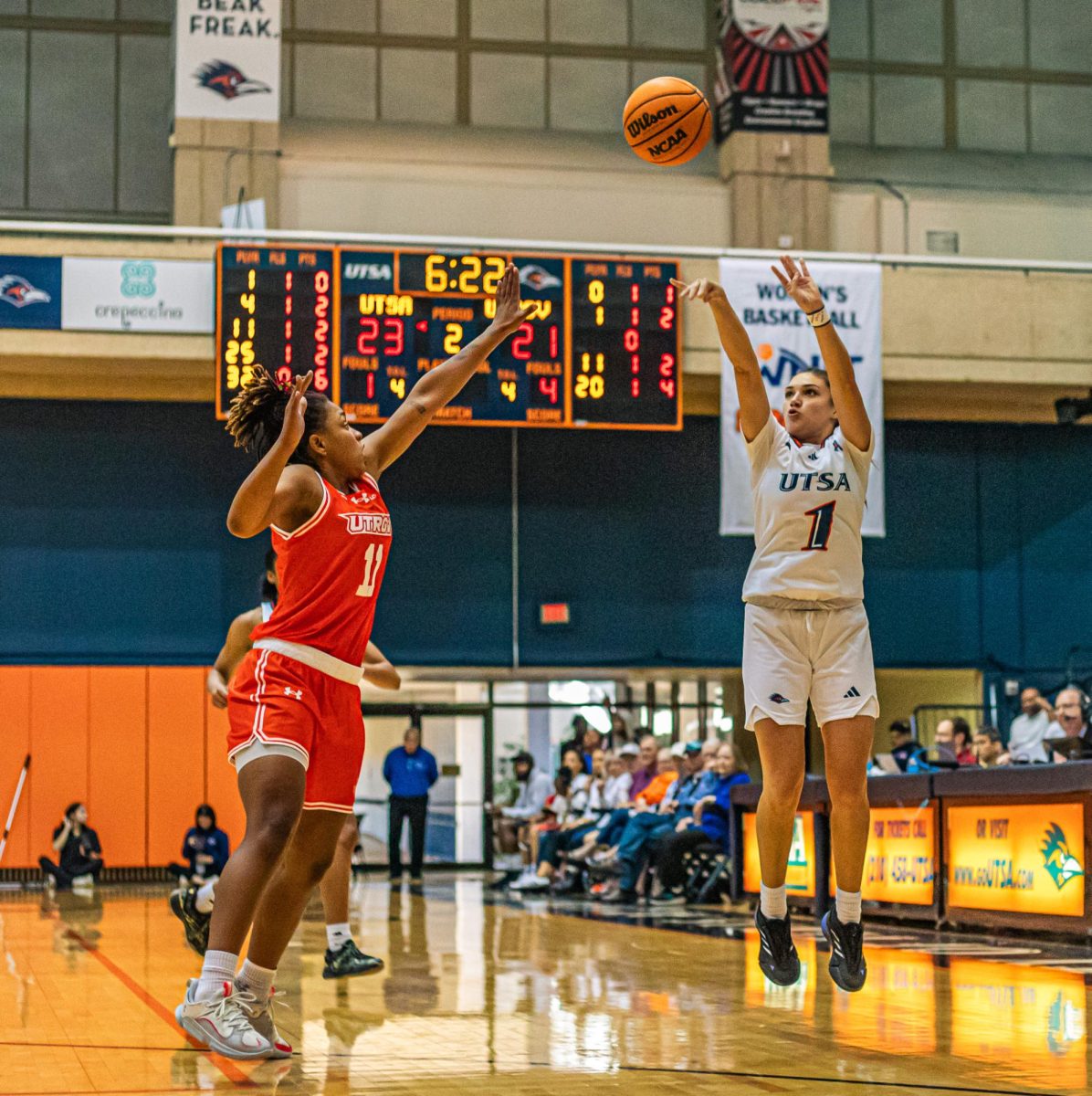SAN ANTONIO – As of July 1, UTSA officially became members of the American Athletic Conference, leaving Conference USA after 10 seasons.
This transition largely comes from the success of the football program, after winning back-to-back C-USA titles and UTSA becoming one of the fastest growing programs in the country. With head football coach Jeff Traylor having huge success in his first three seasons at UTSA and signing a 10-year extension last season, the move to the new conference will enhance the Roadrunners program even further.
Along with UTSA, five other teams made the move to the new league. Now with 14 teams in the conference, the AAC is the biggest it has ever been.
UTSA’s Director of Athletics Lisa Campos and AAC Commissioner Mike Aresco were both present at a press conference held at the Alamodome Wednesday, July 19. Campos has been with UTSA since 2017 and Aresco has been the conference commissioner since 2012.
The Roadrunners joining the new league is not only great for the university, but also for the AAC.
With this realignment, Texas has four teams in the AAC, giving ESPN higher viewership in one of the biggest states in America. With Arescos efforts to give teams within the conference more exposure, the chances that UTSA will be streamed on ESPN, ABC or even featured on Game Day are much higher than ever before.
According to Aresco’s staff page on the conference’s website, “Aresco additionally secured The American’s prominent place in intercollegiate athletics by brokering a landmark 12-year media rights partnership with ESPN in 2019, which provides unprecedented revenue to member institutions while enhancing the conference’s exposure on the premier platforms in sports media.”
Over the years, realignment has brought schools in-and-out of the AAC, but Aresco says that ESPN has maintained its support for the conference.
“They’ve been a great partner of the league,” Aresco said. “When we were down at eight [teams] and we talked to ESPN, our partners, they were great. They said they’ll support expansion, you know whether you want to get back to 10 or 12 teams.
“We really didn’t think about 14 initially. But when we looked around, the obvious choices were schools like UAB, UTSA, Rice and North Texas. We really wanted to solidify our presence in Texas, that was really important, because this state is critical to us.”
Aresco said that he’s even moved his office to Dallas so that he can be closer to all of AAC’s schools to solidify the conference’s presence in Texas now that there are four teams in the Lone Star State.
“The state is now a football hotbed, it’s a huge recruiting state,” Aresco said. “It’s in the DNA of our league to be competitive and to be really good at football and Texas is at the center of that.”
As for UTSA’s future within the conference, Campos maintains focus on academics over athletics as she explained what great exposure this will give to the students at UTSA, athletes and non athletes alike.
“The intangibles are that it is going to increase our profile as an institution,” Campos said. “When we talk about UTSA athletics going into the American, it was all of UTSA. It was an institutional decision to go into the American because we knew it would increase the profile, increase the brand, give brand recognition and national exposure.”
Campos went on to further discuss that she values academics and is proud of how many student-athletes come to the school based on the scholarships and resources the school can offer to the athletes it recruits.
“Athletic scholarships are the second largest scholarship program outside of the GI Bill,” Campos said, “it provides access to higher education. And you look at our student-athletes who, because of their God-given gifted ability, they have access to higher education. So our responsibility is to help them now, graduate from UTSA and go on to get a job and be productive, or go to grad school, whatever that looks like.”
With Campos’ goals for UTSA’s academics and Aresco’s hopes for the athletic department, this merger could bring great exposure to the growing city of San Antonio and its favorite public university.
“Academically, it’s always going to be our focus,” Campos said. “We’re really proud that we had an 87% graduation success rate. That’s a huge testament to our coaches and their recruiting efforts along with UTSA athletes and how committed they are to getting the degree.”




















